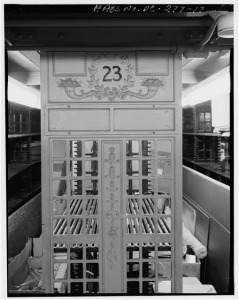A recent Slate article dove into the innovative ways one company revolutionized libraries by just changing its shelving. Accelerated growth of libraries and literacy initiatives in the beginning of the 1900s put a strain on libraries and their collections. Previously, libraries stored their collections on regular, fixed wooden shelving but it was becoming clear that the rapid growth of printed information and library usage were going to overpower the stacks. However, one company from Louisville, Kentucky had a plan.
The Snead & Company cast-iron works took advantage of the expansion of public and academic libraries. The company went about standardizing self-supporting book shelving with interchangeable parts for accommodating various book heights and allowing more books to be stored on the shelves. Some iron book stacks served further architectural purpose by being used as structural reinforcements for the library building. The design and manufacture of this shelving was able to meet the rapidly growing collections of libraries, including at the Library of Congress. They even published a book on the subject. Snead & Company’s designs helped advocate for open stack libraries and adjustable shelving, even important for libraries of today.
Modern libraries and their collections have sure come a long way since Snead & Company’s innovations over a hundred years ago, and the future should prove to be just the same. Check out some of our current collection with First Impressions of new library resources!
